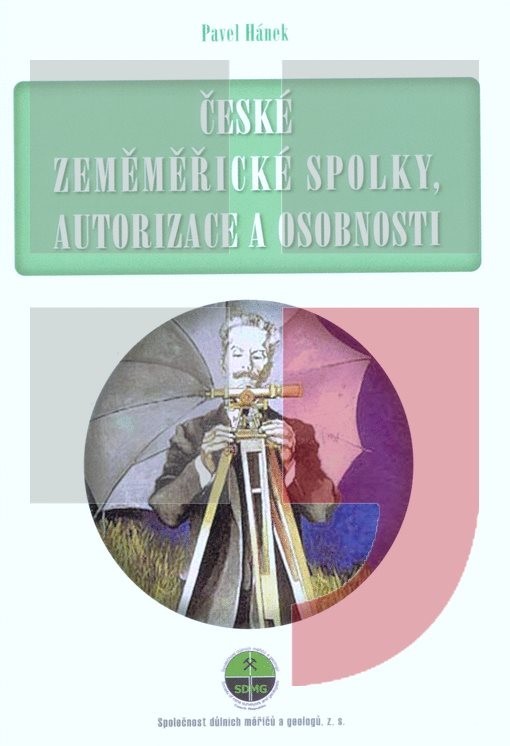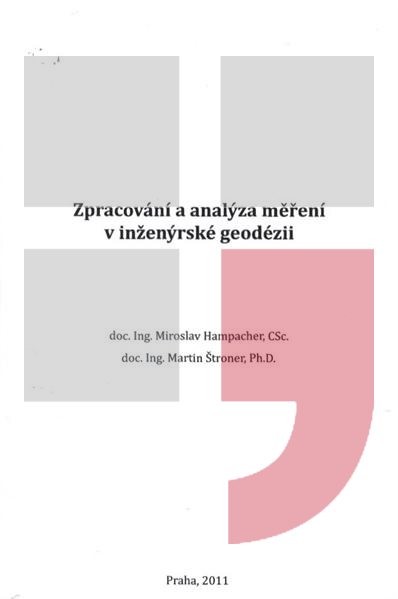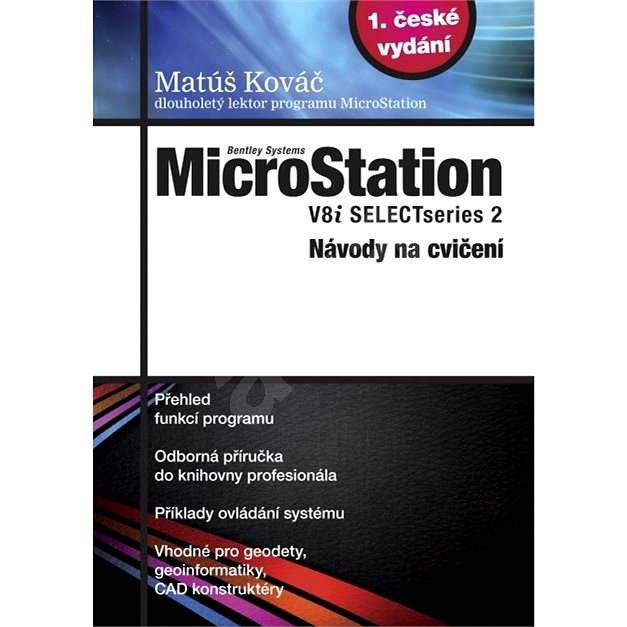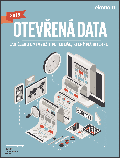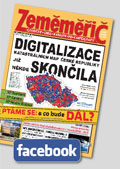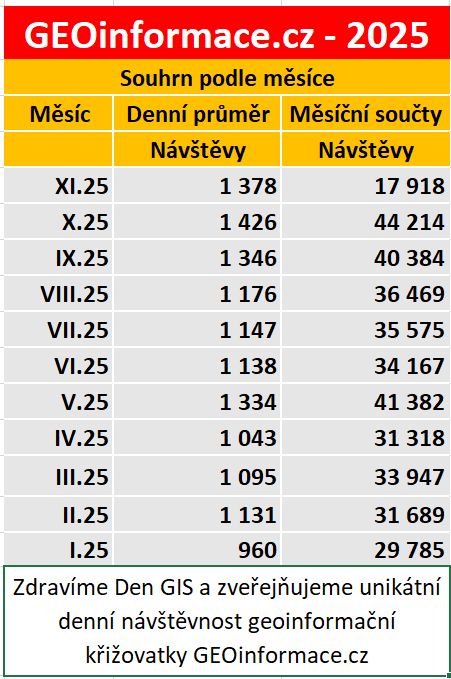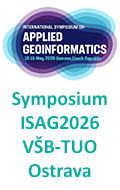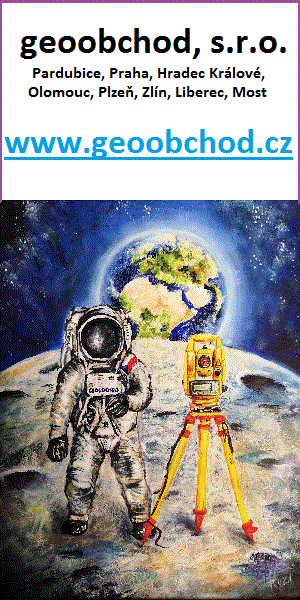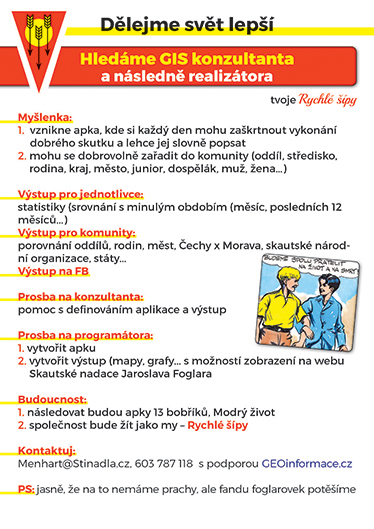zprávy
zdroje zpráv:World Water Week: ESA's role in easing water scarcity
27.8.2018 10:40 ESA Observing the Earth
Water is crucial to life on Earth. But today, its overexploitation and pollution present challenges for the environment, economies and global living standards. These issues are addressed by the United Nations’ Sustainable Development Goals (SDGs) and the annual World Water Week, which runs from 26–31 August 2018 in Stockholm.
20180827-VŘ Asistent/ka
27.8.2018 9:51 ČÚZK - předpisy a opatření Český úřad zeměměřický a katastrální zveřejnil novou aktualitu: Oznámení o vyhlášení výběrového řízení na služební místo Asistent / Asistentka.Asistent / Asistentka
27.8.2018 9:43 ČÚZK - volná místa Český úřad zeměměřický a katastrální vypisuje výběrové řízení na místo Asistent / AsistentkaAsistent / Asistentka
27.8.2018 9:43 ČÚZK /Urady/Cesky-urad-zememericky-a-katastralni/Volna-mista/Asistent-AsistentkaAsistent / Asistentka
27.8.2018 9:43 ČÚZK - předpisy a opatření Český úřad zeměměřický a katastrálnívypisuje výběrové řízení na místo
Asistent / Asistentka
Družice PAZ je první radarovou družicí Španělska, která bude pořizovat data v rozlišení až okolo 1 metru.
27.8.2018 9:00 Gisat Družice je vybavená především radarem se syntetickou aperturou (označovaným jako SAR z angl. Synthetic Aperture Radar) pracujícím v pásmu X na vlnové délce 3,1 cm (tj. frekvenci 9,65 GHz).Airbus Perlan Mission II Soars to Over 62,000 Feet, Setting Second Altitude World Record and Crossing Armstrong Line
27.8.2018 9:00 GISCafe.com Webcasts-Webinars EL CALAFATE, Argentina — (BUSINESS WIRE) — August 27, 2018 —Airbus
Perlan Mission II, the world’s first initiative …
20180824 odborný referent / vrchní referent v oddělení aktualizace geodetických informací
27.8.2018 8:19 ČÚZK /Urady/Katastralni-urady/Katastralni-urady/Katastralni-urad-pro-Stredocesky-kraj/Katastralni-pracoviste/KP-Praha-zapad/O-uradu/Aktuality/20161013Rada-odborny-rada-–-informatik-(5)20180824 odborný referent / vrchní referent v oddělení aktualizace geodetických informací
27.8.2018 8:19 ČÚZK - předpisy a opatření Katastrální úřad pro Středočeský kraj - Katastrální pracoviště Praha-západ Vyhlášení výběrového řízení: odborný referent / vrchní referent v oddělení aktualizace geodetických informací V části "Úřední deska", v sekci "Oznámení a jiná úřední sdělení" bylo vystaveno "Oznámení o vyhlášení výběrového řízení na obsazení služebního místa odborný referent / vrchní referent v oddělení aktualizace geodetických informací"odborný referent / vrchní referent v oddělení aktualizace geodetických informací
27.8.2018 8:18 ČÚZK - předpisy a opatření Katastrální úřad pro Středočeský kraj - Katastrální pracoviště Praha-západvypisuje výběrové řízení na místo odborný referent / vrchní referent v oddělení aktualizace geodetických informací
odborný referent / vrchní referent v oddělení aktualizace geodetických informací
odborný referent / vrchní referent v oddělení aktualizace geodetických informací
27.8.2018 8:18 ČÚZK - volná místa Katastrální úřad pro Středočeský kraj - Katastrální pracoviště Praha-západ vypisuje výběrové řízení na místo odborný referent / vrchní referent v oddělení aktualizace geodetických informacíodborný referent / vrchní referent v oddělení aktualizace geodetických informací
27.8.2018 8:18 ČÚZK /Urady/Katastralni-urady/Katastralni-urady/Katastralni-urad-pro-Stredocesky-kraj/Volna-mista/odborny-referent-vrchni-referent-v-oddeleni-ak-(1)Prohlížecí služba WMS - Kilometrová síť JTSK
27.8.2018 2:00 Cenia - Katalog metadat ČR - INSPIRE Prohlížecí služba WMS-JTSKSIT je poskytována jako veřejná prohlížecí služba nad vektorovými daty souřadnicové sítě JTSK. Pravidelná kilometrová síť s popisem souřadnic průsečíků, vedeným v samostatné vrstvě, slouží především pro rychlou orientaci v síti JTSK a k přibližnému určení souřadnic v mapovém podkladu, který si uživatel zobrazí spolu s daty této služby. Služba splňuje Technické pokyny pro INSPIRE prohlížecí služby v. 3.11 a zároveň splňuje standard OGC WMS 1.1.1. a 1.3.0.HxGN Local letos úplně v novém. Podívejte se na program geo sekce
26.8.2018 22:31 GeoBusiness Letošní ročník konference HxGN Local Česko a Slovensko 2018 poprvé spojuje tři divize nadnárodní společnosti Hexagon, konkrétně Safety & Infrastructure, Manufacturing Intelligence, Process, Power ... PřečístBig data pro biohospodářství
25.8.2018 23:53 GeoBusiness Projekt DataBio, spolufinancovaný programem EU Horizont 2020, je zaměřen na využití velkých dat (big data) pro účely biohospodářství, konkrétně na produkci surovin ze zemědělství, ... PřečístBezpečnost v regionech
25.8.2018 22:54 GeoBusiness V polovině září se v Praze koná konference, kterou pořádá Vysoká škola regionálního rozvoje a Bankovní institut – AMBIS společně s Českou asociací pro geoinformace. Akce ... PřečístProfi notebook Toshiba Tecra Z50-E
24.8.2018 23:51 GeoBusiness Toshiba uvedla na český a slovenský trh první konfigurace nejnovější modelové řady svých profesionálních notebooků Tecra Z50-E. Notebook má matný antireflexní IPS Full HD ... PřečístNový Acronis True Image 2019 umí zálohovat cokoliv a kdekoliv
24.8.2018 23:27 GeoBusiness Acronis True Image 2019 je nová verze software pro zálohování s AI ochranou proti ransomwaru a technologií blockchainové autentizace vytváří nový standard kybernetické bezpečnosti ... PřečístSkySpecs -- Leader in Automated Drone Inspections & Analytics Software -- Announces the Opening of New Office in Amsterdam
24.8.2018 16:42 GISCafe.com Webcasts-Webinars New office expansion enables SkySpecs to accelerate European growth and better serve existing customersANN ARBOR, Mich., Aug. 24, 2018 — …
Maxar Technologies Provides Comprehensive Response to Shareholders Following Misleading Short-Seller Campaign by Hedge Fund
24.8.2018 16:42 GISCafe.com Webcasts-Webinars WESTMINSTER, CO, Aug. 24, 2018 — (PRNewswire) — Maxar Technologies Ltd. (NYSE and TSX: MAXR) ("Maxar" or the "Company") has received a …Digitizing the Indian Construction Industry
24.8.2018 16:14 Bentley SystemsPress Coverage
CE&CR, India
Read the articleDigitizing the Indian Construction Industry
24.8.2018 16:14 Bentley SystemsPress Coverage
CE&CR, India
Read the articleE-On Software Announces 2018 Student Reel Contest
24.8.2018 16:09 Bentley SystemsPress Coverage
Architosh, USA
Read the articleBeyond BIM: Advancements in Modeling and Asset Performance Help Global Infrastructure Go Digital
24.8.2018 16:05 Bentley SystemsPress Coverage
Water Finance & Management, USA
Read the articleBentley’s Year in Infrastructure: 57 Finalists Span the Globe
24.8.2018 15:59 Bentley SystemsPress Coverage
Engineering.com, USA
Read the articleBIM adoption in construction explained by Alan Lamont of Bentley Systems
24.8.2018 15:48 Bentley SystemsPress Coverage
Geo Spatial World, India
Read the articleBarcelona stadium designers use mixed reality construction system
24.8.2018 15:41 Bentley SystemsPress Coverage
New Civil Engineer, UK
Read the articleCarlson Boretrak® Case Study by Doug Ray, Owner of Dallas Hydraulics
24.8.2018 15:37 Carlson Software Recently, one of my underground mining customers from Louisiana asked me to solve a critical issue they were facing. The mine had used several types of drills and had been successful in their operation for many years until they made a change in drill size to increase production. They were drilling vertical holes 50-feet deep […]Protected: Carlson Boretrak® Case Study by Doug Ray, Owner of Dallas Hydraulics
24.8.2018 15:37 Carlson Software There is no excerpt because this is a protected post.Wind mission ready for next phase
24.8.2018 15:00 ESA Observing the Earth
Having worked around the clock since the launch of Aeolus on Wednesday, teams at ESA’s control centre in Germany have declared today that the critical first phase for Europe’s wind mission is complete.
Hurricane Lane
24.8.2018 13:45 ESA Observing the Earth
The Copernicus Sentinel-3 mission takes the temperature of Hurricane Lane on 22 August as it headed for Hawaii
GEPRO a ATLAS 2018: Setkání se blíží
24.8.2018 13:25 GeoBusiness Setkání uživatelů produktů a služeb společností GEPRO & ATLAS 2018 se letos bude konat koncem října. Pořadatelé v upoutávce na setkání píší, že se ... PřečístGeneq Inc. Announces F90 The New Multi-Constellation and highly integrated GNSS Receiver for Survey
24.8.2018 13:13 GISCafe.com Webcasts-Webinars August 24, 2018 -- Montreal, QC – Geneq Inc. is pleased to announce the F90, a multi-constellation GNSS receiver with very high level of …USGIF Awards Highest Amount of Annual Scholarship Funds to Date
24.8.2018 13:07 GISCafe.com Webcasts-Webinars Outstanding students receive a total of $126,000 for academic excellence in GEOINTHerndon, Virginia (August 23, 2018) — The United States …
Odstartovala družice ESA pro studium větru Aeolus
24.8.2018 11:02 Český Kosmický PortálNa palubě rakety Vega byla dopravena do vesmíru nejnovější družice programu ESA „Earth Explorer“ Aeolus. Bude používat revoluční laserovou technologii, s jejíž pomocí bude měřit větrné proudění na celé planetě. Tím se stane klíčem, k lepšímu porozumění fungování atmosféry naší planety. A co víc: tato inovativní mise pomůže zlepšit předpovídání počasí.
Webinar: learn how the surveying community can benefit from Galileo
24.8.2018 10:54 European GNSS Agency
After the launch of 25 July 2018, the Galileo constellation counts 26 satellites, progressing towards full operational capacity. Mapping and surveying professionals can already take advantage the services Galileo offers. With many receivers and reference networks (RTK and PPP) having integrated Galileo, the surveying community can benefit from added value such as easier mitigation of multipath errors; higher signal-to-noise ratio; increased availability, continuity and reliability; and better operation in challenging environments.
To help ensure that the mapping and surveying community is positioned to take full advantage of all that Galileo has to offer, the GSA and EuroGeographics are holding a free webinar. Scheduled for 10 September 2018, the webinar will provide the latest on Galileo developments and services as they related to high-precision positioning and surveying. Topics to be covered include:
- Status of European GNSS programmes (timeline, frequencies, services description)
- The latest in market and technology trends for mapping and surveying
- Key features and benefits of E-GNSS, with the focus on high-accuracy applications (Galileo Open Service (OS) and the Galileo High Accuracy Service (HAS))
- The European GNSS Service Centre as the interface between Galileo and its users
- Galileo integration and adoption in equipment and by augmentation service providers
- Potential use of authentication in the surveying domain
- R&D opportunities for industry and receiver manufacturers (Horizon 2020, Fundamental Elements)
There will also be ample time for questions and answers.
The webinar is open to all surveying and mapping users, including private enterprises and public organisations, as well as interested stakeholders. You can register for this not-to-be-missed event here.
Media note: This feature can be republished without charge provided the European GNSS Agency (GSA) is acknowledged as the source at the top or the bottom of the story. You must request permission before you use any of the photographs on the site. If you republish, we would be grateful if you could link back to the GSA website (http://www.gsa.europa.eu).
Webinar: learn how the surveying community can benefit from Galileo
24.8.2018 10:54 European GNSS Agency
After the launch of 25 July 2018, the Galileo constellation counts 26 satellites, progressing towards full operational capacity. Mapping and surveying professionals can already take advantage the services Galileo offers. With many receivers and reference networks (RTK and PPP) having integrated Galileo, the surveying community can benefit from added value such as easier mitigation of multipath errors; higher signal-to-noise ratio; increased availability, continuity and reliability; and better operation in challenging environments.
To help ensure that the mapping and surveying community is positioned to take full advantage of all that Galileo has to offer, the GSA and EuroGeographics are holding a free webinar. Scheduled for 10 September 2018, the webinar will provide the latest on Galileo developments and services as they related to high-precision positioning and surveying. Topics to be covered include:
- Status of European GNSS programmes (timeline, frequencies, services description)
- The latest in market and technology trends for mapping and surveying
- Key features and benefits of E-GNSS, with the focus on high-accuracy applications (Galileo Open Service (OS) and the Galileo High Accuracy Service (HAS))
- The European GNSS Service Centre as the interface between Galileo and its users
- Galileo integration and adoption in equipment and by augmentation service providers
- Potential use of authentication in the surveying domain
- R&D opportunities for industry and receiver manufacturers (Horizon 2020, Fundamental Elements)
There will also be ample time for questions and answers.
The webinar is open to all surveying and mapping users, including private enterprises and public organisations, as well as interested stakeholders. You can register for this not-to-be-missed event here.
Media note: This feature can be republished without charge provided the European GNSS Agency (GSA) is acknowledged as the source at the top or the bottom of the story. You must request permission before you use any of the photographs on the site. If you republish, we would be grateful if you could link back to the GSA website (http://www.gsa.europa.eu).
Webinar: learn how the surveying community can benefit from Galileo
24.8.2018 10:54 European GNSS Agency
After the launch of 25 July 2018, the Galileo constellation counts 26 satellites, progressing towards full operational capacity. Mapping and surveying professionals can already take advantage the services Galileo offers. With many receivers and reference networks (RTK and PPP) having integrated Galileo, the surveying community can benefit from added value such as easier mitigation of multipath errors; higher signal-to-noise ratio; increased availability, continuity and reliability; and better operation in challenging environments.
To help ensure that the mapping and surveying community is positioned to take full advantage of all that Galileo has to offer, the GSA and EuroGeographics are holding a free webinar. Scheduled for 10 September 2018, the webinar will provide the latest on Galileo developments and services as they related to high-precision positioning and surveying. Topics to be covered include:
- Status of European GNSS programmes (timeline, frequencies, services description)
- The latest in market and technology trends for mapping and surveying
- Key features and benefits of E-GNSS, with the focus on high-accuracy applications (Galileo Open Service (OS) and the Galileo High Accuracy Service (HAS))
- The European GNSS Service Centre as the interface between Galileo and its users
- Galileo integration and adoption in equipment and by augmentation service providers
- Potential use of authentication in the surveying domain
- R&D opportunities for industry and receiver manufacturers (Horizon 2020, Fundamental Elements)
There will also be ample time for questions and answers.
The webinar is open to all surveying and mapping users, including private enterprises and public organisations, as well as interested stakeholders. You can register for this not-to-be-missed event here.
Media note: This feature can be republished without charge provided the European GNSS Agency (GSA) is acknowledged as the source at the top or the bottom of the story. You must request permission before you use any of the photographs on the site. If you republish, we would be grateful if you could link back to the GSA website (http://www.gsa.europa.eu).
Hledáme: IT specialista junior (HPP)
24.8.2018 10:01 TopGis Hledáme novou posilu do našeho IT týmu. Jsme společnost s dlouholetou praxí v oboru geoinformačních technologií. Provozujeme vlastní datové centrum s jedinečnými mapovými podklady ČR a mapovou aplikaci GisOnline.cz. Co u nás budete dělat: Bude Vás to bavit když: Co Vám nabízíme: V případě Vašeho zájmu nám pošlete Váš strukturovaný životopis na emailovou adresu kariera@topgis.cz.Hledáme: Systémový administrátor (HPP)
24.8.2018 9:54 TopGis Hledáme novou posilu do našeho IT týmu. Jsme společnost s dlouholetou praxí v oboru geoinformačních technologií. Provozujeme letecké a pozemní kamery a skenery, zpracováváme v Brně velké objemy mapových dat z ČR a Evropy, provozujeme zákaznické systémy. Jak si Vás představujeme: Náplní Vaší práce bude: Co Vám nabízíme: V případě Vašeho zájmu nám pošlete VášV rámci projektu DataBio se spouští 26 pilotních projektů v oblasti biohospodářství
24.8.2018 7:00 Česká asociace pro geoinformaceProjekt spolufinancovaný programem EU Horizont 2020 může významnou měrou přispět k
rozvoji udržitelného biohospodářství v Evropě díky technologiím zpracování dat velkého
objemu.
Projekt DataBio je zaměřený na využití velkých dat (big data) pro účely biohospodářství,
konkrétně na produkci surovin ze zemědělství, lesnictví a rybolovu. DataBio v tuto
HP Inc. Reports Fiscal 2018 Third Quarter Results
24.8.2018 0:00 GISCafe.com Webcasts-Webinars PALO ALTO, Calif., Aug. 23, 2018 (GLOBE NEWSWIRE) -- HP (NYSE: HPQ)●Third quarter GAAP diluted net earnings per share ("EPS") of $0.54, above …
Accelerated Annualized Recurring Revenue (ARR) Growth Highlights Autodesk's Second Quarter Results
24.8.2018 0:00 GISCafe.com Webcasts-WebinarsResource guide: Drones and UAVs
23.8.2018 20:12 Bentley SystemsPress Coverage
Control Magazine, USA
Read the articleE-on Software launches its 2018 Student Reel Contest
23.8.2018 20:05 Bentley SystemsPress Coverage
Renderosity Magazine, USA
Read the articleACHEMA 2018 REVIEW
23.8.2018 20:01 Bentley SystemsPress Coverage
Chemical Engineering, USA
Read the articleDJI Introduces Mavic 2 Pro And Mavic 2 Zoom: A New Era For Camera Drones
23.8.2018 19:57 GISCafe.com Webcasts-Webinars NEW YORK, Aug. 23, 2018 — (PRNewswire) — DJI, the world's leader in civilian drones and aerial imaging technology, today introduced a …PolarPro Brings DJI Mavic 2 Filter Essentials to Market
23.8.2018 19:57 GISCafe.com Webcasts-Webinars However, There are More to the Filters Than Meets the EyeCOSTA MESA, Calif., Aug. 23, 2018 — (PRNewswire) — PolarPro, a California …
Bentley acquires Synchro Software
23.8.2018 19:56 Bentley SystemsPress Coverage
Graphic Speak, USA
Read the articleTom Walski Water Talk interview at ACE 18
23.8.2018 19:51 Bentley SystemsPress Coverage
Radio - Water Online, USA
Read the articleCompany in digital railway project receives award
23.8.2018 19:46 Bentley SystemsPress Coverage
Position IT, Sub Sahara Africa
Read the articleHurricane Lane Threatens More Than 48,000 Homes in Hawaii According to CoreLogic Analysis
23.8.2018 16:35 GISCafe.com Webcasts-Webinars —Reconstruction Cost Value of Homes in Extreme-to-Very High RiskCategories Total More Than $8 Billion—
IRVINE, Calif. — …
Why measure wind?
23.8.2018 15:30 ESA Observing the Earth
Where does wind come from? Why is it important and why do we need to measure it? And, how is Aeolus going to make these measurements from space?
Vrchní referent/rada – obnova katastrálního operátu na Katastrálním pracovišti Opava Katastrálního ú
23.8.2018 15:07 ČÚZK - volná místa Katastrální úřad pro Moravskoslezský kraj - Katastrální pracoviště Opava vypisuje výběrové řízení na místo Vrchní referent/rada – obnova katastrálního operátu na Katastrálním pracovišti Opava Katastrálního úVrchní referent/rada – obnova katastrálního operátu na Katastrálním pracovišti Opava Katastrálního ú
23.8.2018 15:07 ČÚZK /Urady/Katastralni-urady/Katastralni-urady/Katastralni-urad-pro-Moravskoslezsky-kraj/Uredni-deska/Oznameni-a-jina-uredni-sdeleni/Volna-mista/Vrchni-referent-rada-–-obnova-katastralniho-op-(3)Vrchní referent/rada – obnova katastrálního operátu na Katastrálním pracovišti Opava Katastrálního ú
23.8.2018 15:07 ČÚZK - předpisy a opatření Katastrální úřad pro Moravskoslezský kraj - Katastrální pracoviště Opavavypisuje výběrové řízení na místo
Vrchní referent/rada – obnova katastrálního operátu na Katastrálním pracovišti Opava Katastrálního úřadu pro Moravskoslezský kraj
Vrchní referent/rada – řízení o opravě chyby v SPI na Katastrálním pracovišti Krnov Katastrálního úř
23.8.2018 15:05 ČÚZK - volná místa Katastrální úřad pro Moravskoslezský kraj - Katastrální pracoviště Krnov vypisuje výběrové řízení na místo Vrchní referent/rada – řízení o opravě chyby v SPI na Katastrálním pracovišti Krnov Katastrálního úřVrchní referent/rada – řízení o opravě chyby v SPI na Katastrálním pracovišti Krnov Katastrálního úř
23.8.2018 15:05 ČÚZK /Urady/Katastralni-urady/Katastralni-urady/Katastralni-urad-pro-Moravskoslezsky-kraj/Uredni-deska/Oznameni-a-jina-uredni-sdeleni/Volna-mista/Vrchni-referent-rada-–-rizeni-o-oprave-chyby-v-(2)Vrchní referent/rada – řízení o opravě chyby v SPI na Katastrálním pracovišti Krnov Katastrálního úř
23.8.2018 15:05 ČÚZK - předpisy a opatření Katastrální úřad pro Moravskoslezský kraj - Katastrální pracoviště Krnovvypisuje výběrové řízení na místo
Vrchní referent/rada – řízení o opravě chyby v SPI na Katastrálním pracovišti Krnov Katastrálního úřadu pro Moravskoslezský kraj
Odborný referent – obnova katastrálního operátu na Katastrálním pracovišti Krnov Katastrálního úřadu
23.8.2018 15:03 ČÚZK /Urady/Katastralni-urady/Katastralni-urady/Katastralni-urad-pro-Moravskoslezsky-kraj/Uredni-deska/Oznameni-a-jina-uredni-sdeleni/Volna-mista/Odborny-referent-–-obnova-katastralniho-operat-(1)Odborný referent – obnova katastrálního operátu na Katastrálním pracovišti Krnov Katastrálního úřadu
23.8.2018 15:03 ČÚZK - volná místa Katastrální úřad pro Moravskoslezský kraj - Katastrální pracoviště Krnov vypisuje výběrové řízení na místo Odborný referent – obnova katastrálního operátu na Katastrálním pracovišti Krnov Katastrálního úřaduOdborný referent – obnova katastrálního operátu na Katastrálním pracovišti Krnov Katastrálního úřadu
23.8.2018 15:03 ČÚZK - předpisy a opatření Katastrální úřad pro Moravskoslezský kraj - Katastrální pracoviště Krnovvypisuje výběrové řízení na místo
Odborný referent – obnova katastrálního operátu na Katastrálním pracovišti Krnov Katastrálního úřadu pro Moravskoslezský kraj
Odborný referent/vrchní referent – zápisy v řízení V a Z na Katastrálním pracovišti Krnov Katastráln
23.8.2018 15:01 ČÚZK - předpisy a opatření Katastrální úřad pro Moravskoslezský kraj - Katastrální pracoviště Krnovvypisuje výběrové řízení na místo
Odborný referent/vrchní referent – zápisy v řízení V a Z na Katastrálním pracovišti Krnov Katastrálního úřadu pro Moravskoslezský kraj
Odborný referent/vrchní referent – zápisy v řízení V a Z na Katastrálním pracovišti Krnov Katastráln
23.8.2018 15:01 ČÚZK - volná místa Katastrální úřad pro Moravskoslezský kraj - Katastrální pracoviště Krnov vypisuje výběrové řízení na místo Odborný referent/vrchní referent – zápisy v řízení V a Z na Katastrálním pracovišti Krnov KatastrálnOdborný referent/vrchní referent – zápisy v řízení V a Z na Katastrálním pracovišti Krnov Katastráln
23.8.2018 15:01 ČÚZK /Urady/Katastralni-urady/Katastralni-urady/Katastralni-urad-pro-Moravskoslezsky-kraj/Uredni-deska/Oznameni-a-jina-uredni-sdeleni/Volna-mista/Odborny-referent-vrchni-referent-–-zapisy-v-ri-(3)59_odborný referent – obnova katastrálního operátu v technickém odboru Katastrálního úřadu pro Morav
23.8.2018 14:59 ČÚZK /Urady/Katastralni-urady/Katastralni-urady/Katastralni-urad-pro-Moravskoslezsky-kraj/Uredni-deska/Oznameni-a-jina-uredni-sdeleni/Volna-mista/59_odborny-referent-–-obnova-katastralniho-ope-(1)59_odborný referent – obnova katastrálního operátu v technickém odboru Katastrálního úřadu pro Morav
23.8.2018 14:59 ČÚZK - volná místa Katastrální úřad pro Moravskoslezský kraj - technický odbor vypisuje výběrové řízení na místo 59_odborný referent – obnova katastrálního operátu v technickém odboru Katastrálního úřadu pro Morav59_odborný referent – obnova katastrálního operátu v technickém odboru Katastrálního úřadu pro Morav
23.8.2018 14:59 ČÚZK - předpisy a opatření Katastrální úřad pro Moravskoslezský kraj - technický odborvypisuje výběrové řízení na místo
59_odborný referent – obnova katastrálního operátu v technickém odboru Katastrálního úřadu pro Moravskoslezský kraj
Odborný referent – zápisy v řízení V a Z na Katastrálním pracovišti Karviná Katastrálního úřadu pro
23.8.2018 14:58 ČÚZK /Urady/Katastralni-urady/Katastralni-urady/Katastralni-urad-pro-Moravskoslezsky-kraj/Uredni-deska/Oznameni-a-jina-uredni-sdeleni/Volna-mista/Odborny-referent-–-zapisy-v-rizeni-V-a-Z-na-Ka-(2)Odborný referent – zápisy v řízení V a Z na Katastrálním pracovišti Karviná Katastrálního úřadu pro
23.8.2018 14:58 ČÚZK - volná místa Katastrální úřad pro Moravskoslezský kraj - Katastrální pracoviště Karviná vypisuje výběrové řízení na místo Odborný referent – zápisy v řízení V a Z na Katastrálním pracovišti Karviná Katastrálního úřadu proOdborný referent – zápisy v řízení V a Z na Katastrálním pracovišti Karviná Katastrálního úřadu pro
23.8.2018 14:58 ČÚZK - předpisy a opatření Katastrální úřad pro Moravskoslezský kraj - Katastrální pracoviště Karvinávypisuje výběrové řízení na místo
Odborný referent – zápisy v řízení V a Z na Katastrálním pracovišti Karviná Katastrálního úřadu pro Moravskoslezský kraj
Odborný referent - poskytování informací KN na Katastrálním pracovišti Karviná Katastrálního úřadu p
23.8.2018 14:54 ČÚZK - předpisy a opatření Katastrální úřad pro Moravskoslezský kraj - Katastrální pracoviště Karvinávypisuje výběrové řízení na místo
Odborný referent - poskytování informací KN na Katastrálním pracovišti Karviná Katastrálního úřadu pro Moravskoslezský kraj
Odborný referent - poskytování informací KN na Katastrálním pracovišti Karviná Katastrálního úřadu p
23.8.2018 14:54 ČÚZK /Urady/Katastralni-urady/Katastralni-urady/Katastralni-urad-pro-Moravskoslezsky-kraj/Uredni-deska/Oznameni-a-jina-uredni-sdeleni/Volna-mista/Odborny-referent-poskytovani-informaci-KN-na-KatOdborný referent - poskytování informací KN na Katastrálním pracovišti Karviná Katastrálního úřadu p
23.8.2018 14:54 ČÚZK - volná místa Katastrální úřad pro Moravskoslezský kraj - Katastrální pracoviště Karviná vypisuje výběrové řízení na místo Odborný referent - poskytování informací KN na Katastrálním pracovišti Karviná Katastrálního úřadu pRada/odborný rada – rozhodování o povolení vkladu na Katastrálním pracovišti Frýdek - Místek Katastr
23.8.2018 14:51 ČÚZK - předpisy a opatření Katastrální úřad pro Moravskoslezský kraj - Katastrální pracoviště Frýdek-Místekvypisuje výběrové řízení na místo
Rada/odborný rada – rozhodování o povolení vkladu na Katastrálním pracovišti Frýdek - Místek Katastrálního úřadu pro Moravskoslezský kraj
Rada/odborný rada – rozhodování o povolení vkladu na Katastrálním pracovišti Frýdek - Místek Katastr
23.8.2018 14:51 ČÚZK - volná místa Katastrální úřad pro Moravskoslezský kraj - Katastrální pracoviště Frýdek-Místek vypisuje výběrové řízení na místo Rada/odborný rada – rozhodování o povolení vkladu na Katastrálním pracovišti Frýdek - Místek KatastrRada/odborný rada – rozhodování o povolení vkladu na Katastrálním pracovišti Frýdek - Místek Katastr
23.8.2018 14:51 ČÚZK /Urady/Katastralni-urady/Katastralni-urady/Katastralni-urad-pro-Moravskoslezsky-kraj/Uredni-deska/Oznameni-a-jina-uredni-sdeleni/Volna-mista/Rada-odborny-rada-–-rozhodovani-o-povoleni-vkladuCihly z lunárního prachu
23.8.2018 14:35 Český Kosmický PortálLunární stavby se začínají rodit na Zemi. Evropští výzkumníci pracují se simulovaným lunárním regolitem, což by jednoho dne mělo umožnit obyvatelům naší přirozené družice stavět nové budovy základny a dláždit tak cestu pro další průzkum vesmíru.
44_odborný referent – obnova katastrálního operátu v technickém odboru Katastrálního úřadu pro Morav
23.8.2018 14:30 ČÚZK - volná místa Katastrální úřad pro Moravskoslezský kraj - technický odbor vypisuje výběrové řízení na místo 44_odborný referent – obnova katastrálního operátu v technickém odboru Katastrálního úřadu pro Morav44_odborný referent – obnova katastrálního operátu v technickém odboru Katastrálního úřadu pro Morav
23.8.2018 14:30 ČÚZK - předpisy a opatření Katastrální úřad pro Moravskoslezský kraj - technický odborvypisuje výběrové řízení na místo
44_odborný referent – obnova katastrálního operátu v technickém odboru Katastrálního úřadu pro Moravskoslezský kraj
44_odborný referent – obnova katastrálního operátu v technickém odboru Katastrálního úřadu pro Morav
23.8.2018 14:30 ČÚZK /Urady/Katastralni-urady/Katastralni-urady/Katastralni-urad-pro-Moravskoslezsky-kraj/Uredni-deska/Oznameni-a-jina-uredni-sdeleni/Volna-mista/44_odborny-referent-–-obnova-katastralniho-ope-(1)Kartograf/ka
23.8.2018 14:16 ČÚZK - volná místa Zeměměřický úřad vypisuje výběrové řízení na místo Kartograf/kaKartograf/ka
23.8.2018 14:16 ČÚZK - předpisy a opatření Zeměměřický úřadvypisuje výběrové řízení na místo
Kartograf/ka
Kartograf/ka
23.8.2018 14:16 Zeměměřický úřad Zeměměřický úřadvypisuje výběrové řízení na místo
Kartograf/ka
Liftoff in pictures
23.8.2018 14:10 ESA Observing the Earth
A selection of photos from the Aeolus liftoff
Aeolus highlights
23.8.2018 13:15 ESA Observing the Earth
A look back at preparations for the 22 August liftoff of ESA’s Aeolus wind satellite from Europe’s spaceport in French Guiana
ESA’s Aeolus wind sensing satellite successfully launched from Kourou
23.8.2018 13:05 GISCafe.com Webcasts-Webinars Airbus-built Aeolus satellite to map Earth’s wind in real-timeKourou, 22 August 2018 - Aeolus, the European Space Agency’s wind sensing …
"Maptitude 2018 Includes Updated Free Health Care Data" by Susan Smith
23.8.2018 12:45 GISCafe.com Webcasts-WebinarsOGC seeks public comment on GeoPackage Related Tables Extension
23.8.2018 12:44 GISCafe.com Webcasts-Webinars Extension will enable features in a GeoPackage data store to reference related content, such as photos or other multimedia content.22 August 2018: …
Program Setkání G&A 2018
23.8.2018 12:12 GEPROSetkání uživatelů produktů a služeb společností GEPRO a ATLAS se blíží.… >>
Zemřel brněnský kartograf Doc. RNDr. Milan V. Drápela, CSc.
23.8.2018 12:08 Zeměměřič Ve věku 80 let zemřel 13. srpna 2018 Doc. Milan V. Drápela, který přispíval také do časopisu Zeměměřič - např. nedávný velký rozhovor o Komenského mapě Moravy.O terminologii
23.8.2018 9:40 Česká kosmická kancelářPohyb je základní přírodní jev, fenomén, který patří k nejrůznějším projevům všech součástí našeho světa. Jeho druhů může být vícero a proto je i v lidské řeči, češtinu nevyjímaje, řada výrazů, kterými jsou tyto pohyby nazývány. Fyzická konstituce těla člověku umožňuje vlastní silou pohyb po pevném povrchu. Tedy ve dvou rozměrech, když ve třetím rozměru jsou jeho možnosti pohybu velmi omezené.
O terminologii
23.8.2018 9:40 Česká kosmická kancelářPohyb je základní přírodní jev, fenomén, který patří k nejrůznějším projevům všech součástí našeho světa. Jeho druhů může být vícero a proto je i v lidské řeči, češtinu nevyjímaje, řada výrazů, kterými jsou tyto pohyby nazývány. Fyzická konstituce těla člověku umožňuje vlastní silou pohyb po pevném povrchu. Tedy ve dvou rozměrech, když ve třetím rozměru jsou jeho možnosti pohybu velmi omezené.
20180906 rada/odborný rada v oddělení právních vztahů k nemovitostem
23.8.2018 8:44 ČÚZK /Urady/Katastralni-urady/Katastralni-urady/Katastralni-urad-pro-Stredocesky-kraj/Katastralni-pracoviste/KP-Rakovnik/O-uradu/Aktuality/20161013Rada-odborny-rada-–-informatik-(4)20180823 rada/ odborný rada v právním oddělení odboru právních vztahů k nemovitostem
23.8.2018 8:44 ČÚZK /Urady/Katastralni-urady/Katastralni-urady/Katastralni-urad-pro-Stredocesky-kraj/Katastralni-pracoviste/KP-Praha-zapad/O-uradu/Aktuality/20161013Rada-odborny-rada-–-informatik-(4)20180906 rada/odborný rada v oddělení právních vztahů k nemovitostem
23.8.2018 8:44 ČÚZK - předpisy a opatření Katastrální úřad pro Středočeský kraj - Katastrální pracoviště Rakovník Vyhlášení výběrového řízení: rada/odborný rada v oddělení právních vztahů k nemovitostem V části "Úřední deska", v sekci "Oznámení a jiná úřední sdělení" bylo vystaveno "Oznámení o vyhlášení výběrového řízení na obsazení služebního místa rada/odborný rada v oddělení právních vztahů k nemovitostem"20180823 rada/ odborný rada v právním oddělení odboru právních vztahů k nemovitostem
23.8.2018 8:44 ČÚZK - předpisy a opatření Katastrální úřad pro Středočeský kraj - Katastrální pracoviště Praha-západ Vyhlášení výběrového řízení: rada/ odborný rada v právním oddělení odboru právních vztahů k nemovitostem V části "Úřední deska", v sekci "Oznámení a jiná úřední sdělení" bylo vystaveno "Oznámení o vyhlášení výběrového řízení na obsazení služebního místa rada/ odborný rada v právním oddělení odboru právních vztahů k nemovitostem"rada/ odborný rada v právním oddělení odboru právních vztahů k nemovitostem
23.8.2018 8:43 ČÚZK - předpisy a opatření Katastrální úřad pro Středočeský kraj - Katastrální pracoviště Praha-západvypisuje výběrové řízení na místo rada/ odborný rada v právním oddělení odboru právních vztahů k nemovitostem
rada/ odborný rada v právním oddělení odboru právních vztahů k nemovitostem
rada/ odborný rada v právním oddělení odboru právních vztahů k nemovitostem
23.8.2018 8:43 ČÚZK /Urady/Katastralni-urady/Katastralni-urady/Katastralni-urad-pro-Stredocesky-kraj/Volna-mista/rada-odborny-rada-v-pravnim-oddeleni-odboru-pravnrada/ odborný rada v právním oddělení odboru právních vztahů k nemovitostem
23.8.2018 8:43 ČÚZK - volná místa Katastrální úřad pro Středočeský kraj - Katastrální pracoviště Praha-západ vypisuje výběrové řízení na místo rada/ odborný rada v právním oddělení odboru právních vztahů k nemovitostemLaunch coverage
23.8.2018 0:50 ESA Observing the Earth
Watch the replay of the Aeolus launch coverage from Europe’s Spaceport in Kourou, French Guiana
ESA’s Aeolus wind satellite launched
23.8.2018 0:35 ESA Observing the Earth
ESA’s Earth Explorer Aeolus satellite has been launched into polar orbit on a Vega rocket. Using revolutionary laser technology, Aeolus will measure winds around the globe and play a key role in our quest to better understand the workings of our atmosphere. Importantly, this novel mission will also improve weather forecasting.
Liftoff replay
22.8.2018 23:25 ESA Observing the Earth
Watch the replay of ESA’s Aeolus mission lifting off from Europe’s Spaceport in French Guiana
Liftoff replay
22.8.2018 23:25 ESA Observing the Earth
Watch the replay of ESA’s Aeolus mission lifting off from Europe’s Spaceport in French Guiana
Ubimo Wins 'Best Location Based Marketing Platform' in 2018 MarTech Breakthrough Awards Program
22.8.2018 20:31 GISCafe.com Webcasts-Webinars NEW YORK, Aug. 22, 2018 — (PRNewswire) — Ubimo, a SaaS location intelligence company, today announced that it has been honored …Laser Technology, Inc. Announces a New and Improved TruPulse 360 Laser Rangefinder with TruVector Compass Technology
22.8.2018 17:12 GISCafe.com Webcasts-Webinars Laser Technology's integration of their TruVector 360 Compass Technology within the TruPulse 360 laser rangefinder has formed the most advanced …Interoperable plant design to optimise production facilities
22.8.2018 15:38 Bentley SystemsPress Coverage
Position IT, Sub Sahara Africa
Read the articleMapping the future of digital cities
22.8.2018 15:35 Bentley SystemsPress Coverage
Architecture & Design Network, Australia/New Zealand
Read the articleThe Open Road
22.8.2018 15:32 Bentley SystemsPress Coverage
Roads and Infrastructure Australia, Australia/New Zealand
Read the articleThe Open Road
22.8.2018 15:32 Bentley SystemsPress Coverage
Roads and Infrastructure Australia, Australia/New Zealand
Read the articleThe Open Road
22.8.2018 15:32 Bentley SystemsPress Coverage
Roads and Infrastructure Australia, Australia/New Zealand
Read the article“India is significant growth market for Bentley Systems”
22.8.2018 15:26 Bentley SystemsPress Coverage
IPF Plus, India
Read the article“India is significant growth market for Bentley Systems”
22.8.2018 15:26 Bentley SystemsPress Coverage
IPF Plus, India
Read the article“India is significant growth market for Bentley Systems”
22.8.2018 15:26 Bentley SystemsPress Coverage
IPF Plus, India
Read the articleUnderstanding Bentley Systems’ Connected Data Environment Approach
22.8.2018 15:21 Bentley SystemsPress Coverage
ARC Advisory Group, USA
Read the articleSiemens-Bentley collaborate on Process Industries Initiative
22.8.2018 14:59 Bentley SystemsPress Coverage
World Water, UK
Read the articleSiemens-Bentley collaborate on Process Industries Initiative
22.8.2018 14:59 Bentley SystemsPress Coverage
World Water, UK
Read the articleSiemens-Bentley collaborate on Process Industries Initiative
22.8.2018 14:59 Bentley SystemsPress Coverage
World Water, UK
Read the article



